The Relationship Between Employee Engagement and Mental Health
.png)
- What Does Employee Engagement Mean?
- The Relationship Between Engagement and Mental Health
- How to Prioritize Employee Mental Health to Increase Engagement
- 1. Offer Mental Health Days
- 2. Provide Flexible Working Options
- 3. Permit Time Off for Treatment
- 4. Prioritize Clear Communication
- 5. Destigmatize Mental Health at Work


 Cut onboarding time
by 60%—here's the
Ultimate Checklist
that helped do it.
Cut onboarding time
by 60%—here's the
Ultimate Checklist
that helped do it.

Stress at work affects 83% of Americans, and while all jobs have their stressors, if left unchecked, these high levels of stress can cause reduced employee engagement and mental health struggles. This can have a direct impact on employee engagement at work. Understanding the components of employee engagement and implementing effective employee onboarding and engagement initiatives are crucial for maintaining a healthy workplace culture. A well-designed onboarding process can set the foundation for long-term employee satisfaction and engagement.
What Does Employee Engagement Mean?
What do we mean when we talk about employee engagement? Many people assume employee engagement means employees feel happy or satisfied at work. However, this isn’t strictly true.
Employee engagement is when an employee feels emotionally committed to an organization and its goals. In other words, an engaged employee cares about the company they work for. They don’t just come into work at 9 am, leave at 5 pm, and count down the days until their next paycheck. They are fully engaged and committed to the company and its future aspirations. A robust employee engagement strategy and workforce engagement strategy, starting from the employee onboarding phase, are essential for fostering this level of commitment.
The Relationship Between Engagement and Mental Health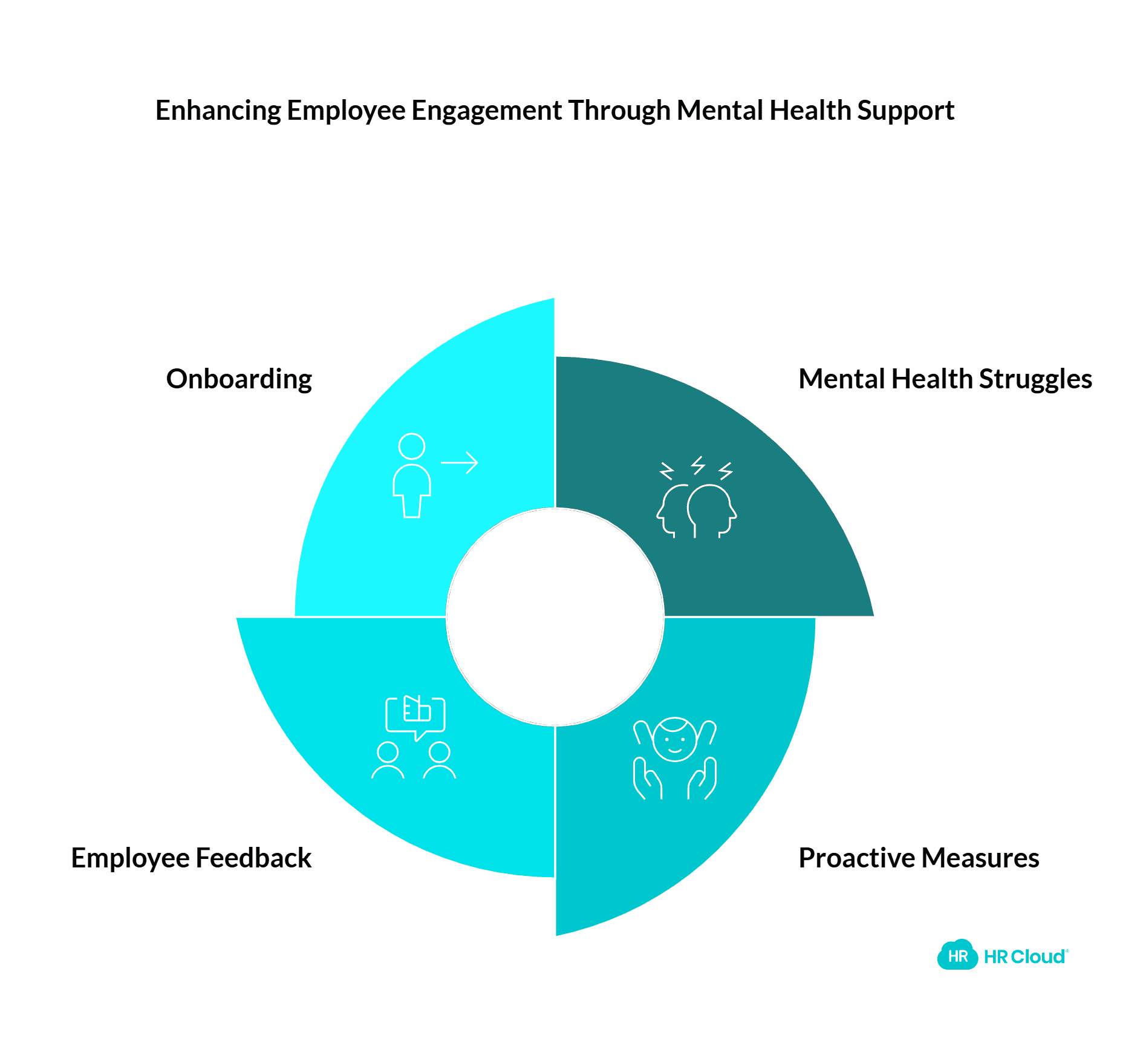
We can’t mention employee engagement without mentioning mental health. After all, there is a direct link between these two things. When an employee is struggling with their mental health, they are more likely to be:
-
Depressed
-
Disengaged
-
Unmotivated
-
Distracted
-
Emotionally volatile
-
Withdrawn
-
Anxious
-
Uncommunicative
There are many signs and symptoms of mental health struggles, and it is very likely that there may be employees in your workplace who are silently struggling. So, it’s important to know your employees well so that you can note any changes in their behavior that could signify a problem.
If you notice an employee who is showing signs of mental health issues and struggling with workplace engagement as a result, it’s important to be proactive. Implementing employee engagement programs and seeking regular employee feedback can help identify and address these issues early on. Effective employee onboarding can also play a crucial role in setting the right tone for mental health awareness from the start.
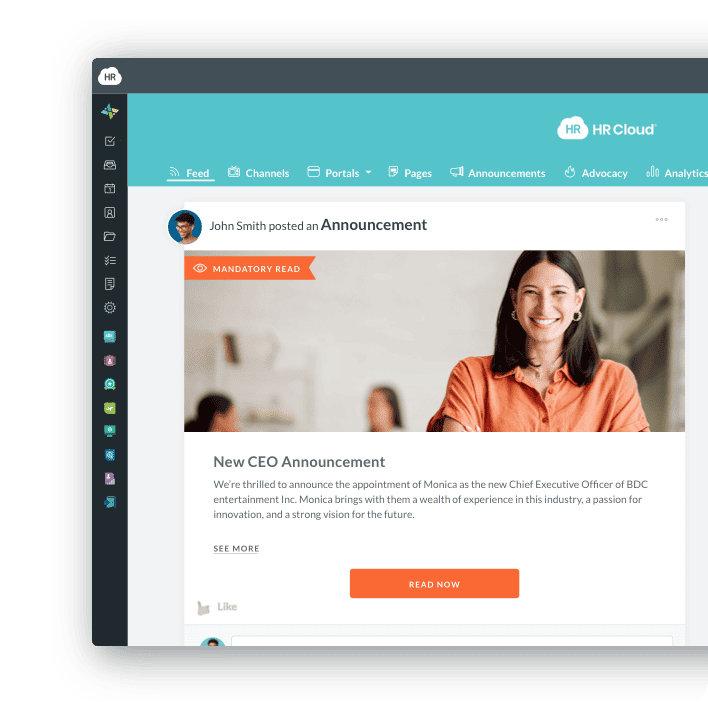
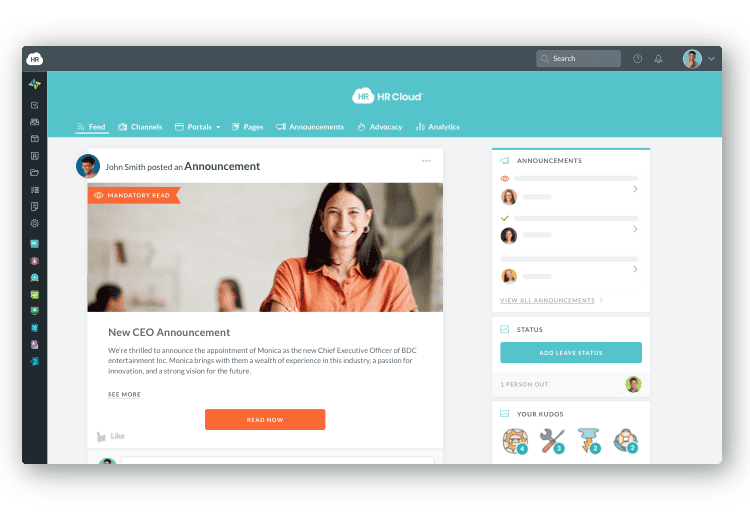
How to Prioritize Employee Mental Health to Increase Engagement 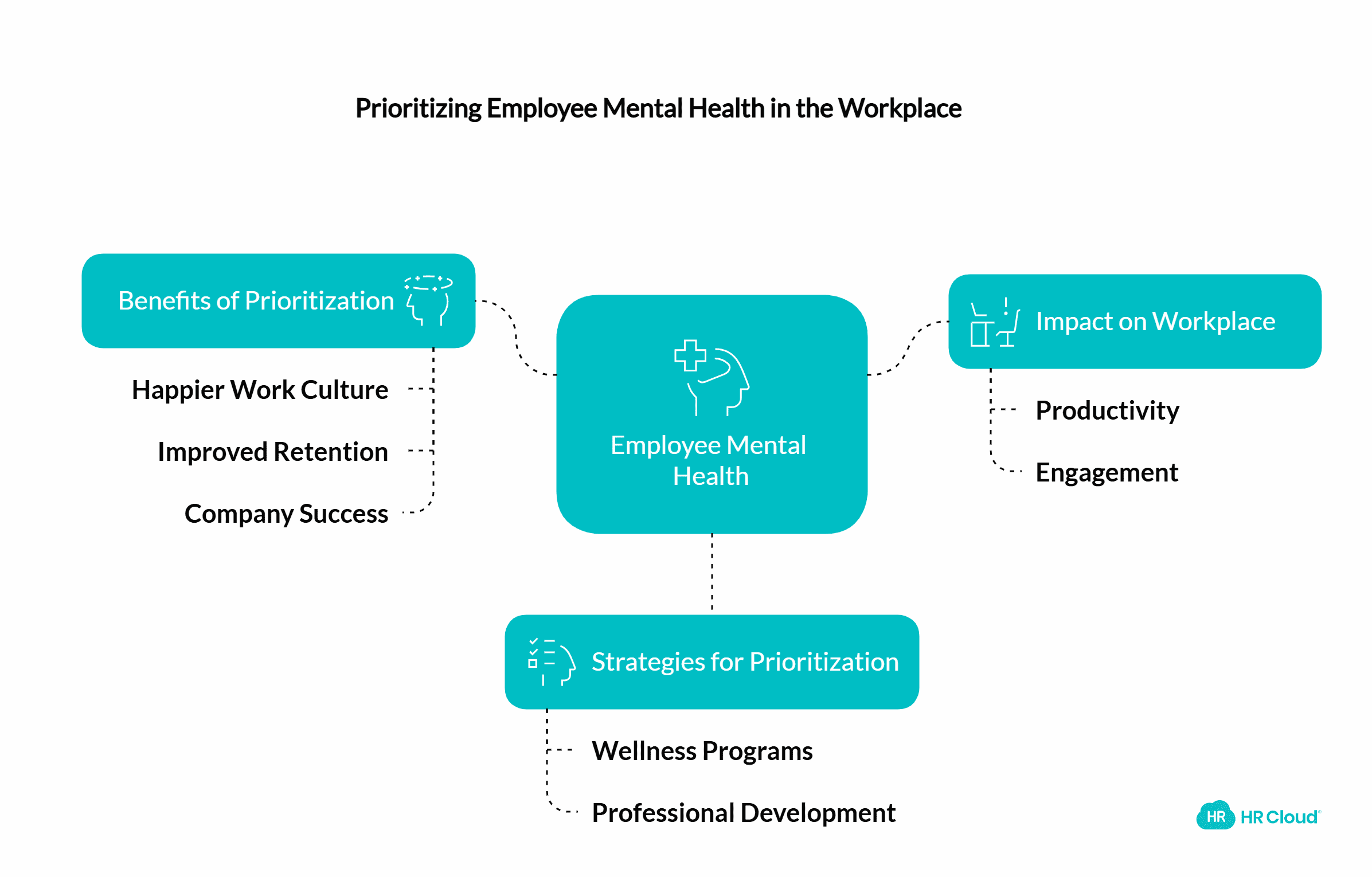
The health and well-being of your employees play a vital role in workplace productivity, engagement, and success. If you haven’t given this much consideration before, it’s time to prioritize employee wellness and mental health through comprehensive wellness programs and professional development programs.
In America alone, one in 25 adults lives with a serious mental health condition that significantly impacts their daily life. The cost of mental health struggles to an employer, through loss of engagement and productivity alone, is higher than most other health issues. So, providing the proper care and support for struggling employees is essential.
If you take the time to prioritize the care of your employees’ mental health, you will build a happier work culture, improve employee retention, and see your company succeed as a result of high levels of employee engagement. But how do you prioritize employee mental health? Well, we have listed a number of very effective strategies and engagement ideas for employees below.
1. Offer Mental Health Days
Mental health affects everyone differently, and everyone uses different strategies to cope. What we can all agree on, however, is that sometimes you just need to take a day off. If you want to support your employees’ mental health and wellbeing in order to promote better engagement at work, you should offer mental health days as part of your employee engagement initiatives.
According to the Cleveland Clinic, a mental health day is “a day that doesn’t involve engaging with major sources of stress or frustration. It’s a day to relax, decompress and take care of yourself overall. If you notice that you’re easily agitated, physically or mentally exhausted, anxious or unable to focus, you could probably use a mental health day.”
Employers should recognize that offering mental health days is just as important as offering physical sick days. Taking a day out for mental health reasons ensures employees can return to work refreshed and better able to engage, contributing to overall job satisfaction.
2. Provide Flexible Working Options
Allowing work-from-home days can make all the difference to employee mental health and engagement. Not everyone works best between the hours of 9 am-5 pm, and many people find the noise and distractions of the office difficult for concentration. Mixing things up by providing flexible work arrangements can make all the difference.
It shouldn’t matter whether your employees prefer to work from home, a bustling cafe, or a park bench. The most important thing is that they can choose where they work best and have the option to do so a couple of times a week. This approach to work-life balance is a key component of successful employee engagement programs and can be incorporated into strategic onboarding practices.
If you’ve noticed an employee becoming disengaged and detached from colleagues, it’s possible they could be struggling with their mental health and withdrawing as a result. Consider suggesting they work from home a couple of days a week. Simply offering this flexibility can make all the difference in helping employees take charge of their mental health to more effectively engage with work. This flexibility can also be extended to onboarding training, allowing new hires to absorb information in a comfortable environment.
3. Permit Time Off for Treatment 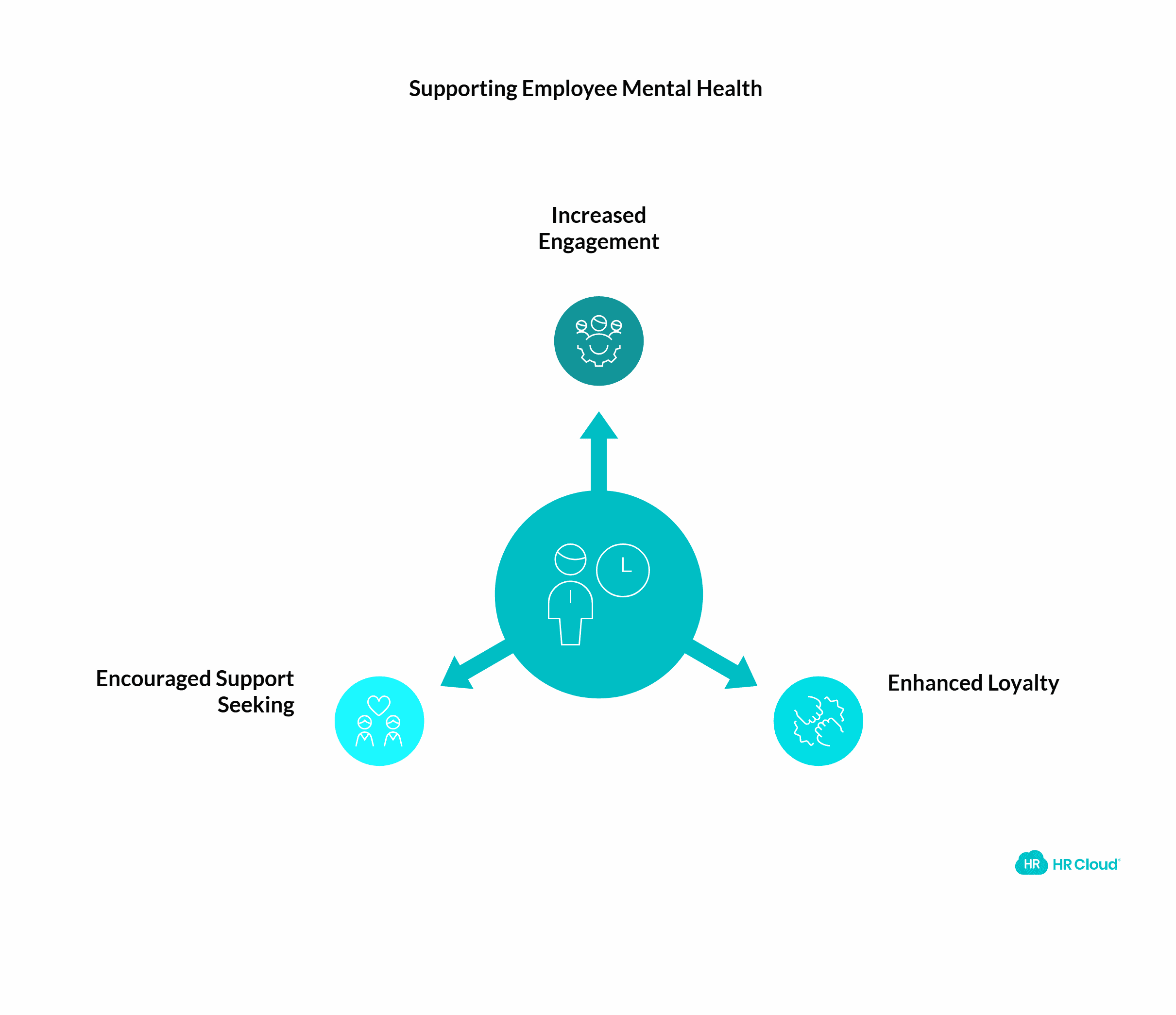
People experiencing mental health challenges often fail to seek the support they really need. So, when an employee approaches you requesting time off for treatment, this is something to celebrate!
If you want to increase employee engagement at work, you need to ensure everyone receives the treatment they need to succeed. Whether your employee is struggling with anxiety, PTSD, depression, burnout or addiction (to name a few), they may request time off ranging anywhere from a couple of days to a couple of weeks to seek the treatment they need.
Burnout is one of the more common causes of employees requesting time off work. “Experts have identified six key domains of a person’s life that are related to burnout.” According to LuxuryRehabs.com, “Stress within these areas may represent a risk factor for developing symptoms”:
-
Workload
-
Control
-
Reward
-
Community
-
Fairness
-
Values
Permitting employees time off to receive treatment is essential. Not only will this ensure your employees receive the help they need, but it will also encourage others who may be struggling to come forward and seek support. This approach demonstrates a commitment to employee well-being and can significantly boost engagement and loyalty.
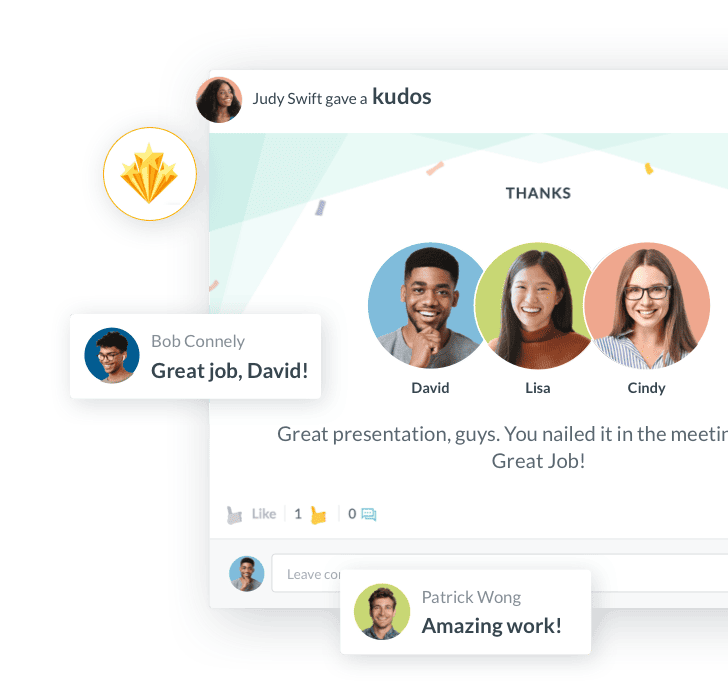
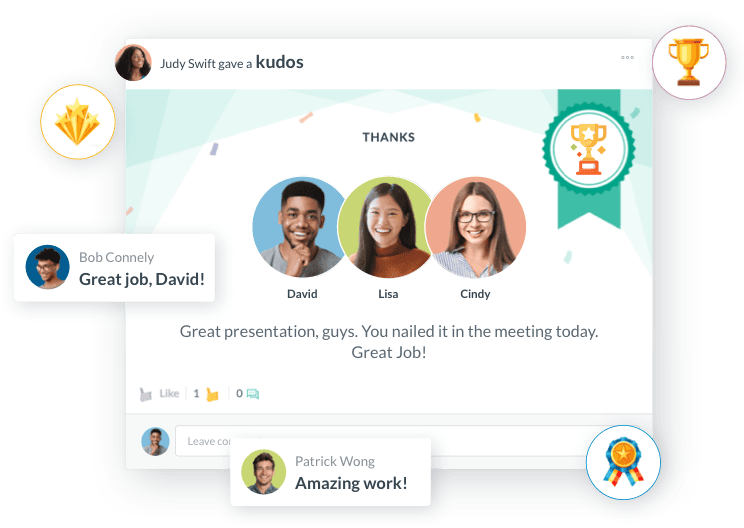
4. Prioritize Clear Communication
Communication is one of the most important aspects of being an effective employer. According to the Corporate Wellness Magazine, “more communication about mental health benefits and resources means more people know about the care options available to them and can seek them out when needed.
Clear communication in the workplace is especially important when it comes to tackling mental health, as it allows you to avoid misunderstandings, communicate care to your employees, and form healthy relationships in the workplace. Regular employee surveys and feedback mechanisms can help maintain open lines of communication and identify areas for improvement in your employee engagement strategy. Sharing employee engagement examples can also inspire and motivate your team.
Often, we resort to emails or text messages during the business of any given day. However, these communication channels can make anxiety or mental health issues worse, as it can be hard to read emotions behind the words on the page, which can often result in overthinking and high levels of stress, particularly from anxious employees. This is why it’s always best to communicate in person where possible, fostering a positive workplace culture.
5. Destigmatize Mental Health at Work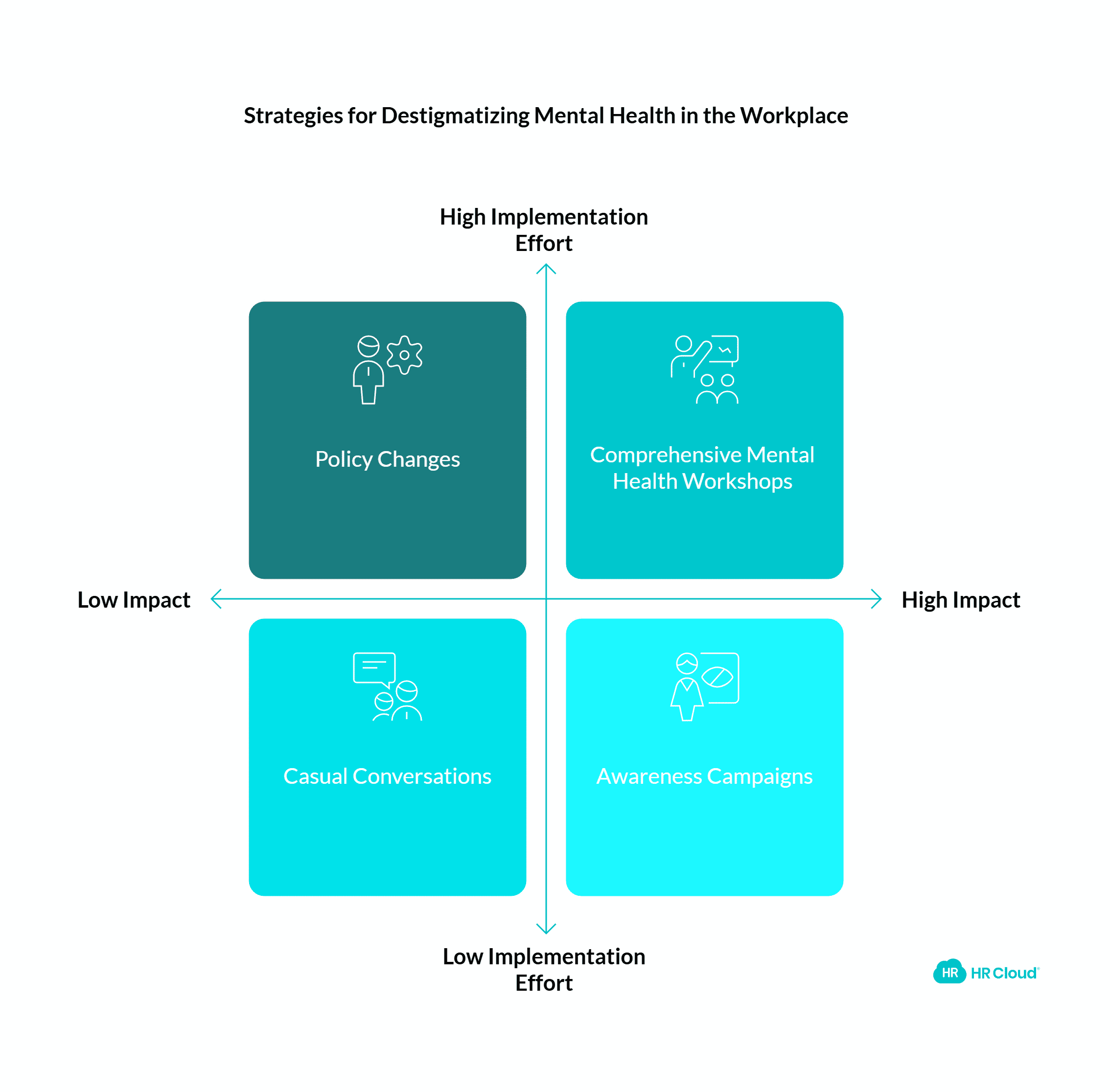
While mental health issues are easier to spot in some people than others, it is essential you create a working environment where employees feel safe and supported, no matter what they are going through. Reducing the stigmas surrounding mental health is a great first step towards this goal and can significantly contribute to employee engagement.
To destigmatize mental health at work, we recommend running team training days or workshops focused on mental health, how to spot the signs, and how to offer support. Doing so can encourage struggling employees that it’s okay to seek the help they need. These initiatives can also serve as opportunities for learning and development, contributing to employees' professional growth and reinforcing a positive company culture.
According to Forbes, “mental health remains a stigmatized topic. If you’re a leader, you can influence mental health stigma through both policy and cultural change. Reducing mental health stigma is not only the right thing to do, it also helps people perform at their best." Promoting continuous learning about mental health can help create a more empathetic and supportive work environment.
Final Words
As you can tell, there is a close relationship between employee mental health and engagement at work. We hope that by following the strategies outlined in this article, you can make positive changes to your workplace that help increase employee engagement for the long term.
FAQ's
1. What is the link between mental health and employee engagement?
Employee mental health significantly affects engagement levels. Poor mental health can lead to withdrawal, lack of motivation, and reduced productivity, directly impacting an employee’s emotional connection to their work.
2. How can companies improve employee engagement through mental health support?
By offering mental health days, flexible working options, access to treatment, and promoting open communication, companies can create a healthier, more engaged workforce.
3. Why should mental health days be considered as important as sick days?
Mental health days allow employees to recharge emotionally, helping them return to work more focused and engaged, similar to how sick days help with physical recovery.
4. What are effective ways to destigmatize mental health at work?
Hosting mental health workshops, creating safe spaces for discussions, and encouraging leadership to openly support wellness can reduce stigma and foster a culture of care.
5. What are the signs an employee may be struggling with mental health?
Common signs include disengagement, distraction, anxiety, irritability, withdrawal from team interaction, and sudden changes in communication habits.
6. How does flexible work contribute to mental health and engagement?
Giving employees control over their work environment and schedule helps reduce stress and improves focus, which boosts overall engagement and job satisfaction.
7. Why is clear communication important for mental wellness in the workplace?
Transparent and empathetic communication helps employees feel seen and supported, reducing misunderstandings and anxiety—especially in remote or hybrid setups.
8. What are the benefits of permitting time off for mental health treatment?
Supporting employees through recovery improves long-term productivity, lowers turnover, and builds a culture where people feel valued and supported.

Keep Reading
45 Boss Day Messages That Actually Mean Something (2026 Guide)
When is Boss Day 2026? Mark your calendar for October 16, 2026 — the annual opportunity
Birthday Wishes for Coworkers: 50+ Messages That Build Workplace Connection
A coworker's birthday isn't just another calendar date—it's a meaningful opportunity to
Embracing Diversity: Recognizing Different Cultures in the Workplace
Workplaces today reflect the incredible diversity of the world around us. People bring
Like What You Hear?
We'd love to chat with you more about how HR Cloud® can support your business's HR needs. Book Your Free Demo

Build a Culture of Recognition. Boost Engagement. Guaranteed.
Workmates empowers employees to stay informed, connected, and appreciated—whether they’re on the front line, in the office, or remote. Recognition drives 12x higher engagement.Trusted by industry leaders in every sector




Cut Onboarding Costs by 60%.
Take the confusion and follow-ups out of onboarding with automated workflows, digital forms, and structured portals—so new hires ramp faster 3X quicker.Trusted by industry leaders in every sector




